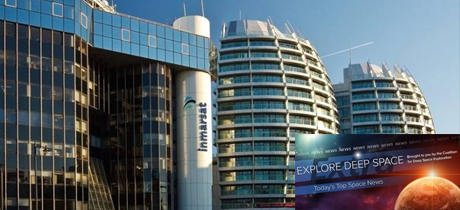In Today’s Deep Space Extra… NASA to provide Artemis update today. Glitchy strap could be behind Lucy asteroid probe’s solar array troubles.
Human Space Exploration
NASA to provide Artemis update
SpaceNews.com (11/9): NASA will provide an update on its plans for the Artemis program as the new head of the agency’s exploration efforts, Jim Free, works on near-term and long-term priorities. The agency will hold a teleconference today to provide an update on the exploration plans under the program. In its statement announcing the teleconference, NASA didn’t provide further details about the update or who will speak at the event. Join the teleconference at 3:00 p.m. EST, here.
Crew-2 astronauts return to Earth
SpaceNews.com (11/8): The Crew Dragon capsule undocked from the ISS at 2:05 p.m. EST Monday, with a splashdown in the Atlantic Ocean at 10:33 p.m. EST. The splashdown concluded a 199-day mission at the ISS for the Crew-2 astronauts. One of the four main parachutes on the Crew Dragon did not fully inflate immediately after deployment, but did so later before splashdown. A NASA official said that the agency will look into the issue before the upcoming Crew-3 launch, scheduled for no earlier than November 10 at 9:03 p.m. EST.
Space Science
NASA says a glitchy strap could be behind Lucy asteroid probe’s solar array troubles
Space.com (11/8): Launched October 16, NASA’s Lucy mission soon experienced difficulty deploying one of two large solar arrays. Mission personnel believe the difficulty may lie with a lanyard that helps the array deploy, and NASA continues to seek a root cause. Meanwhile, the science instruments are being activated. Lucy will conduct flybys of seven Trojan asteroids that orbit the sun at the same distance as Jupiter, a first, plus an asteroid in the main asteroid belt over a 12-year mission.
NASA sending Mars helicopter back to where it all started
UPI (11/8): On Mars, NASA’s Ingenuity drone helicopter took flight over the past weekend for its 15th time. The 128-second flight was a test of the atmosphere at the Jezero Crater landing site of NASA’s Mars 2020 Perseverance rover in February. Both the Ingenuity helicopter and the Perseverance rover are heading back to their initial landing site, where they will prepare to explore an ancient stream delta. NASA also is preparing a flight software upgrade which could potentially enable new navigation capabilities onboard.
Does Earth have a twin? An influential new report urges NASA to find out
Yahoo.com (11/8): In its latest decadal survey of astronomy and astrophysics priorities, the National Academy of Sciences, Engineering, and Medicine is recommending that NASA embark on the development of a new space telescope to find and characterize Earth-like planets. Estimated to cost $11 billion, the observatory would be equipped with infrared, optical and ultraviolet sensors. A companion coronagraph would block the light from bright stars so their planetary companions can be better observed. The new observatory could be ready to launch in the early 2040s.
Other News
Viasat buying Inmarsat in $7.3 billion deal
SpaceNews.com (11/9): U.S.-based Viasat plans to purchase British satellite fleet operator Inmarsat for $7.3 billion to expand its global broadband network with spacecraft in multiple orbits and communicating over multiple spectral bands. “It’s clear the satellite communications sector is entering an era of dynamic new market demand that is growing fast, remains highly fragmented and is attracting new entrants who see new opportunities,” according to Inmarsat CEO Rajeev Suri. “Given these factors, scale and scope are important, and that is exactly what this transition offers.”
Finally! Here’s the video of Webb’s unboxing
Coalition Member in the News – Northrop Grumman
Universe Today (11/8): Recently, the NASA, European and Canadian space agency James Webb Space Telescope (JWST) was shipped from Northrop Grumman development and testing facilities in Redondo Beach, California, to its launch site in French Guiana. There, the observatory is being prepared for a December 18 launch on a multi-year mission to study the earliest star and galaxy formation and assess the atmospheres of extrasolar planets for biomarkers.
Japan’s Epsilon launches RAISE-2 and eight secondary satellites
NASAspaceflight.com (11/8): After delays, Japan launched its Epsilon small sat rocket with nine satellites that were placed in orbit on Tuesday, including RAISE-2, a technology demonstrator.

